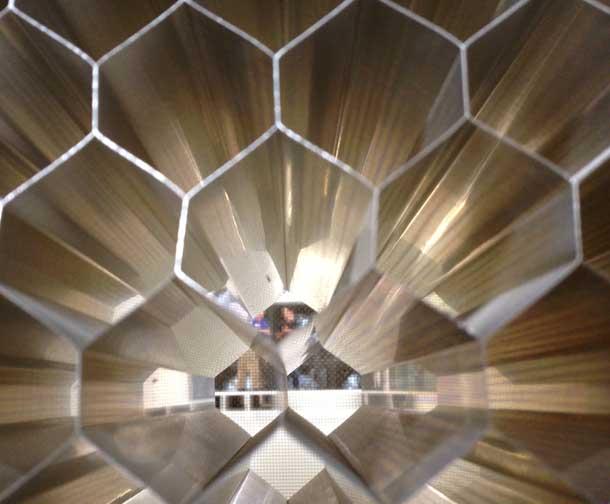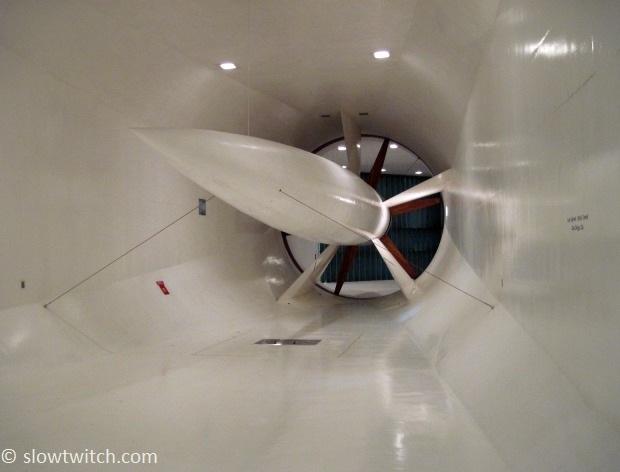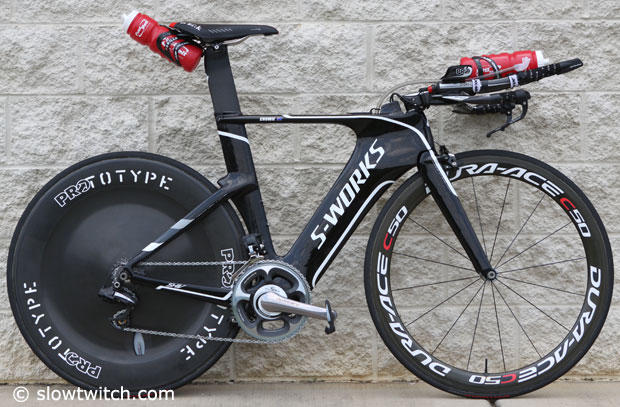The Specialized Wind Tunnel
"Aero is huge," saith Mark Cote, the chief aero officer at the Morgan Hill headquarters of Specialized Bicycle Components. What, then, would be more appropriate than the announcement of a new bicycle-specific wind tunnel? It’s new, built for the purpose, and of course bicycle-specific, testing up to 100 kilometers an hour. This is ultra low-speed, as most “low-speed” tunnels will test to 300 miles-per-hour, obviously much more than necessary for bicycle testing. This tunnel facility, 7 months in construction, is a quarter-mile away from its Morgan Hill headquarters.
It’s an “open” design, that is, open circuit or open return. It’s not shaped like a big oblong donut. This kind of tunnel is linear, inside a vaulted warehouse, and the air enters and exits each end. These are generally considered cheaper to build than closed circuit tunnels but they are not necessarily less accurate. A lot of attention must be paid to smoothing and conditioning the air prior to entering the test section.
In attendance at the unveiling of its new tunnel were the living history of the Specialized courtship with aero. The godfather of bicycle aerodynamics, Chester Kyle, was there. Chet worked with Specialized going back to the 1980s, and has continued to work with Specialized, including on the Venge and the Shiv. Mark Hopkins was at the launch. Mark was the engineer at DuPont working on what would become the Specialized 3-spoke, now the HED3. Longtime industrial designer Robert Egger, who has as much as any other shaped the look of Specialized from helmets to trade show booths, as well as Chuck Teixeira, formerly the most impactful engineer at Easton while that brand was at its zenith in high-end bike component and frame materials.
At this tunnel’s launch engineer Chris Yu laid out Specialized’s approach, that computational fluid dynamics (CFD) acts as a virtual wind tunnel test via a numerical simulation. CFD weeds out non-starter prototypes before making any physical models. CFD is good for flow physics. But what about a bike and a rider? Specialized made a fully instrumented bike, with a sort of anemometer, laser position sensors, data flows into a data “B box” and is transmitted wirelessly anywhere worldwide.
CFD is theoretical, and the instrumented bike is very applied, but doesn’t have the precision of CFD. A third leg to the stool is the wind tunnel, replicating the real world in a lab environment.
Specialized maintains it built its tunnel for all its products, from helmets to commuter bikes. Apparel. Even off-road bikes. Obviously, the proximity to its tunnel; and the ability to test much more frequently rather than according to a set calendar of availability at commercial tunnels; allows for a streamlined design process, no pun intended. It also allows for the construction of a powerful aero narrative. As has been the case with the Body Geometry and BG Fit programs Specialized does well selling processes rather than simply products. Rather than selling a bike, or a helmet, or a saddle, Specialized sells aerodynamics and fit, and those processes in turn are much more powerful sellers of its saddles and bicycles.
The tunnel is not, then, simply and only a precision tool. It’s a cudgul with which it will beat the head of its competitors because, to the degree it can make the case that aero is huge, Specialized by default wins the argument because, of course, who in its competitive set has a wind tunnel?
Further, these processes can, on paper, inform each other. Can a wind tunnel inform the protocols for BG Fit? Certainly. On paper. Chris Yu alluded, during this tunnel’s launch, to the confluence of fit and tunnel testing but, of course, no fit protocol can contemplate a tunnel next to the fit bike. Better yet would be a fit bike in the tunnel – epecially one that can be actuated by a fitter outside the tunnel. But the tool closest to that, at the moment, is the Guru Experience tool, and that’s owned by the parent company of competitor Cannondale.
A bike sits aboard the balance at the Specialized bike-specific wind tunnel just unveiled.
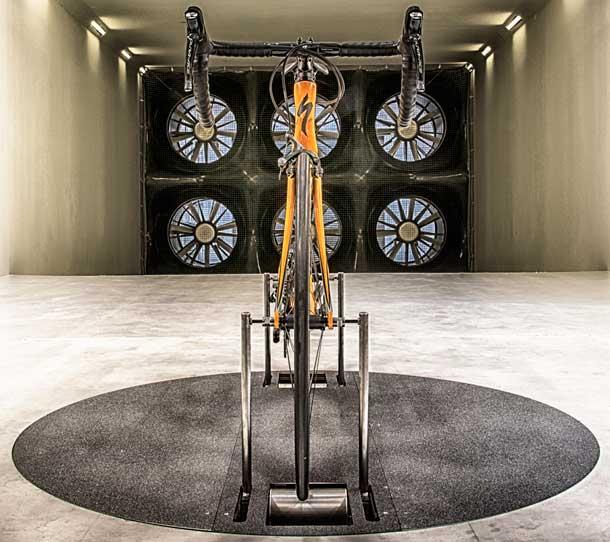
The tunnel has a large test section.
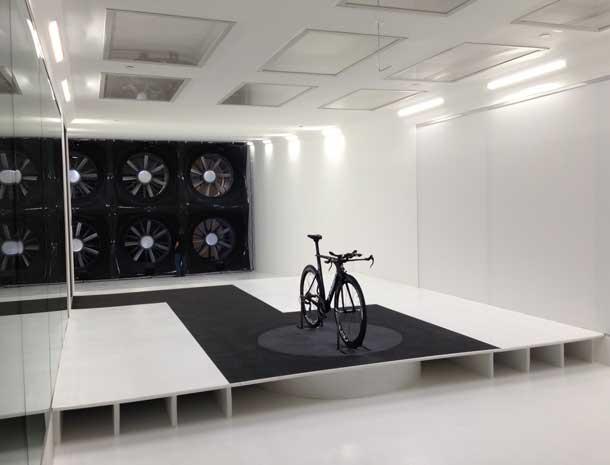
This is a linear "open circuit" tunnel that sits inside a large, vaulted warehouse a quarter-mile from the Specialized headquarters.
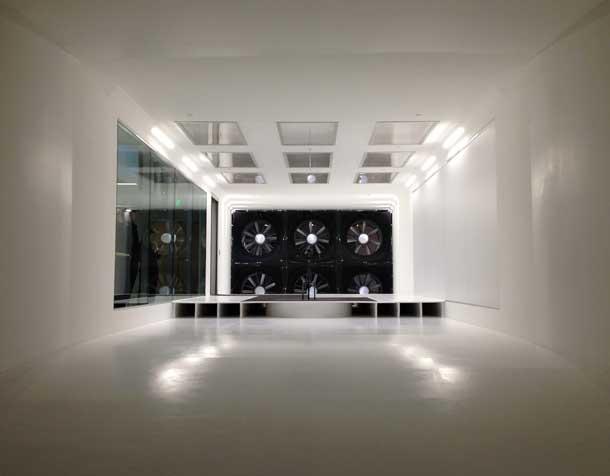
This is not just a tool to make better products. It's a process play. Sit retailers here, ask them to watch, and then subliminally ask them how Trek and Giant can match this.
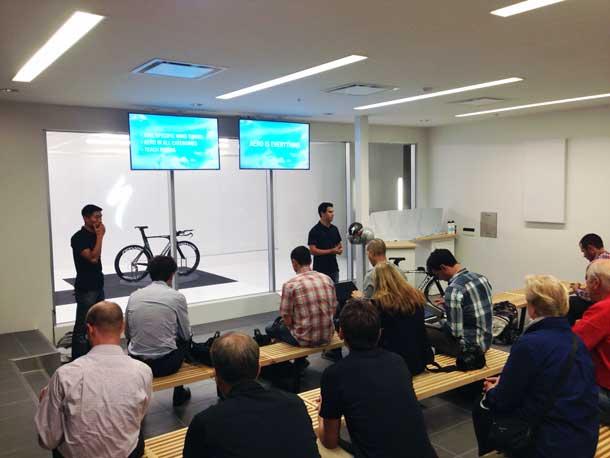
Behind the curtain: It's a linear tunnel in a big warehouse. But it's breezy in that warehouse, so, no shipping done out of here.
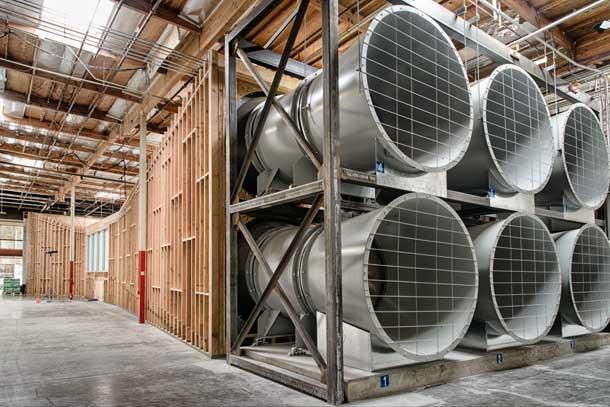
Rather than one large fan, hard to replace or fix quickly when down or broken, Specialized opted for six smaller commercially available fans to power the tunnel.
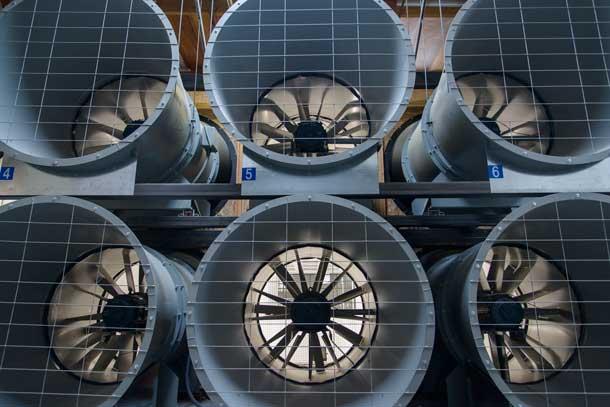
With an open circuit tunnel you must work harder to smooth, condition and straighten the air.
